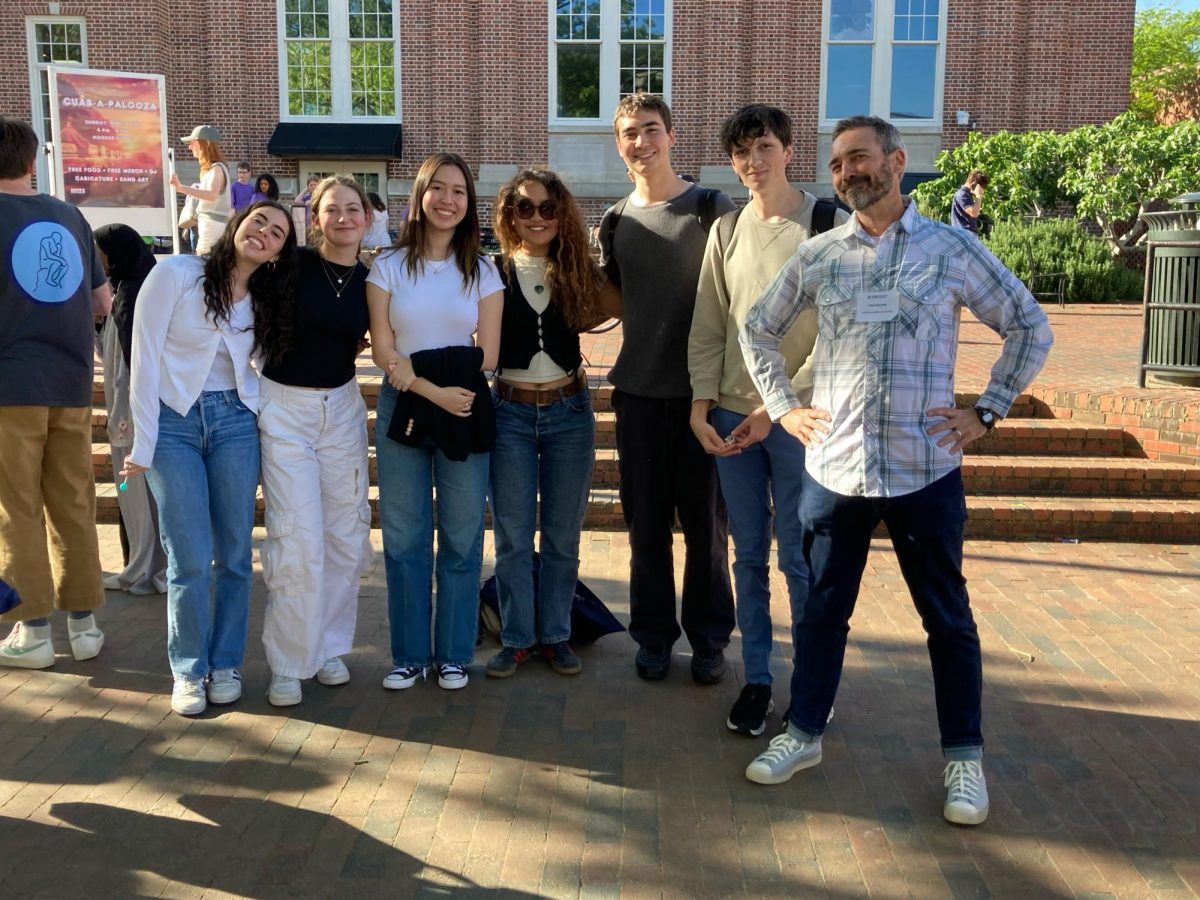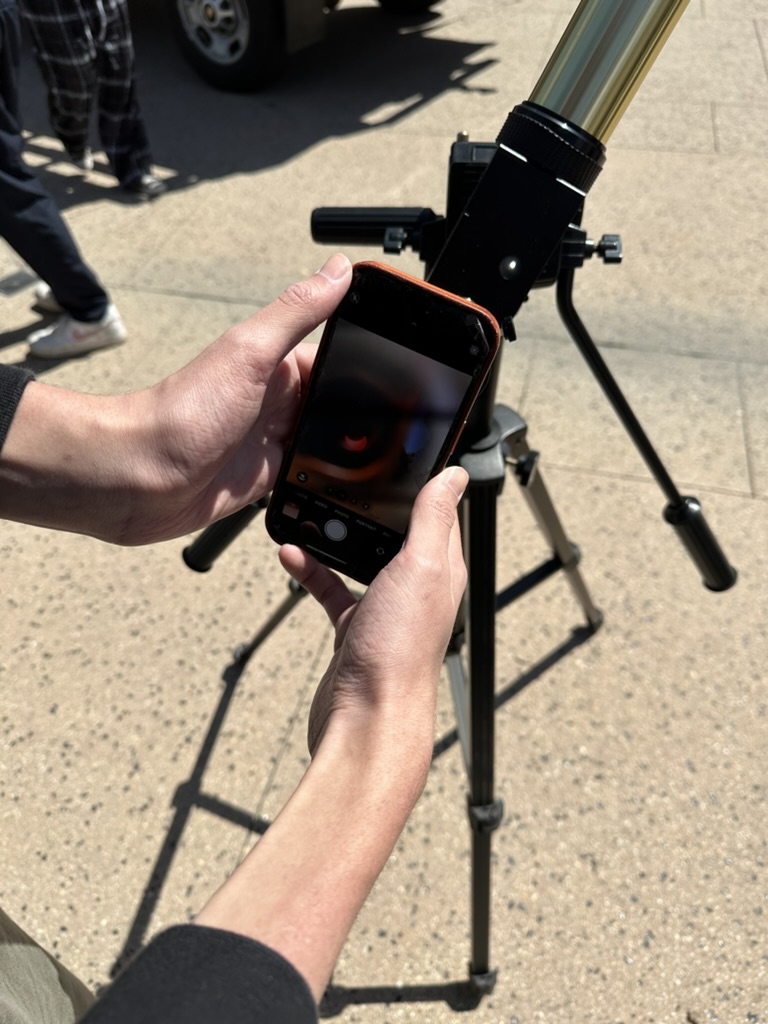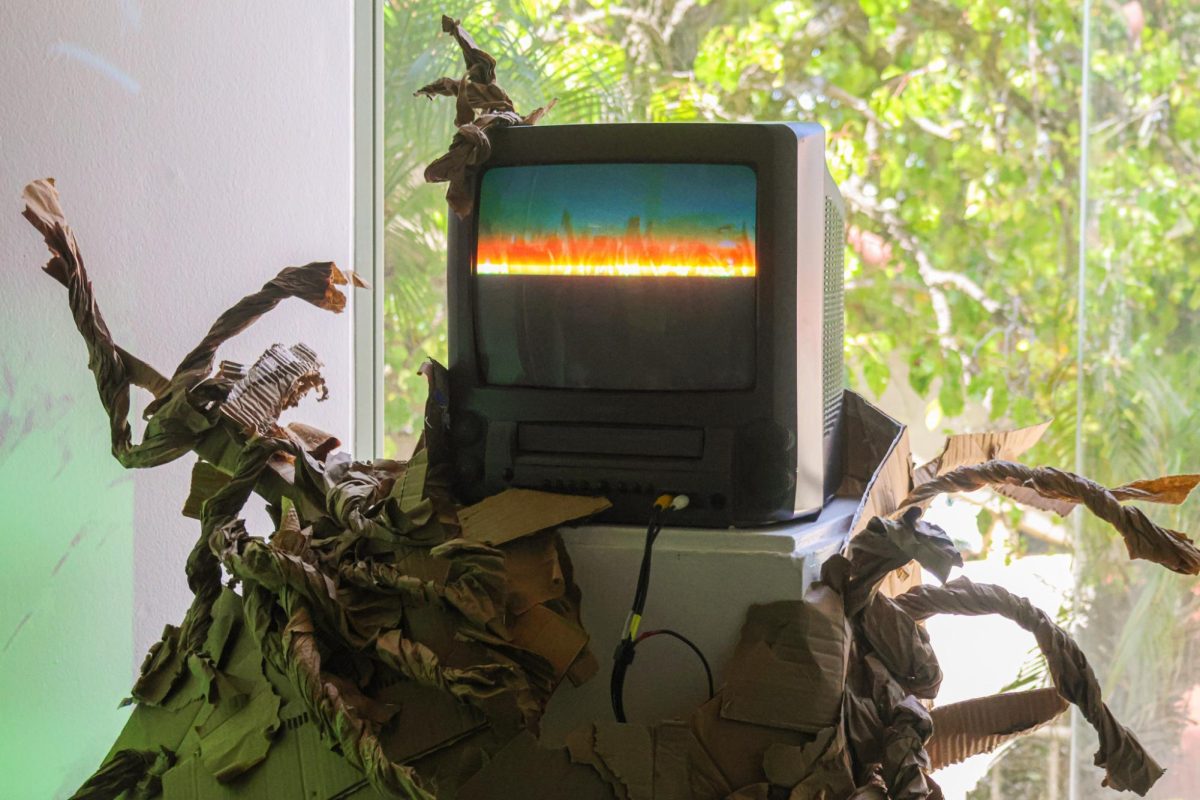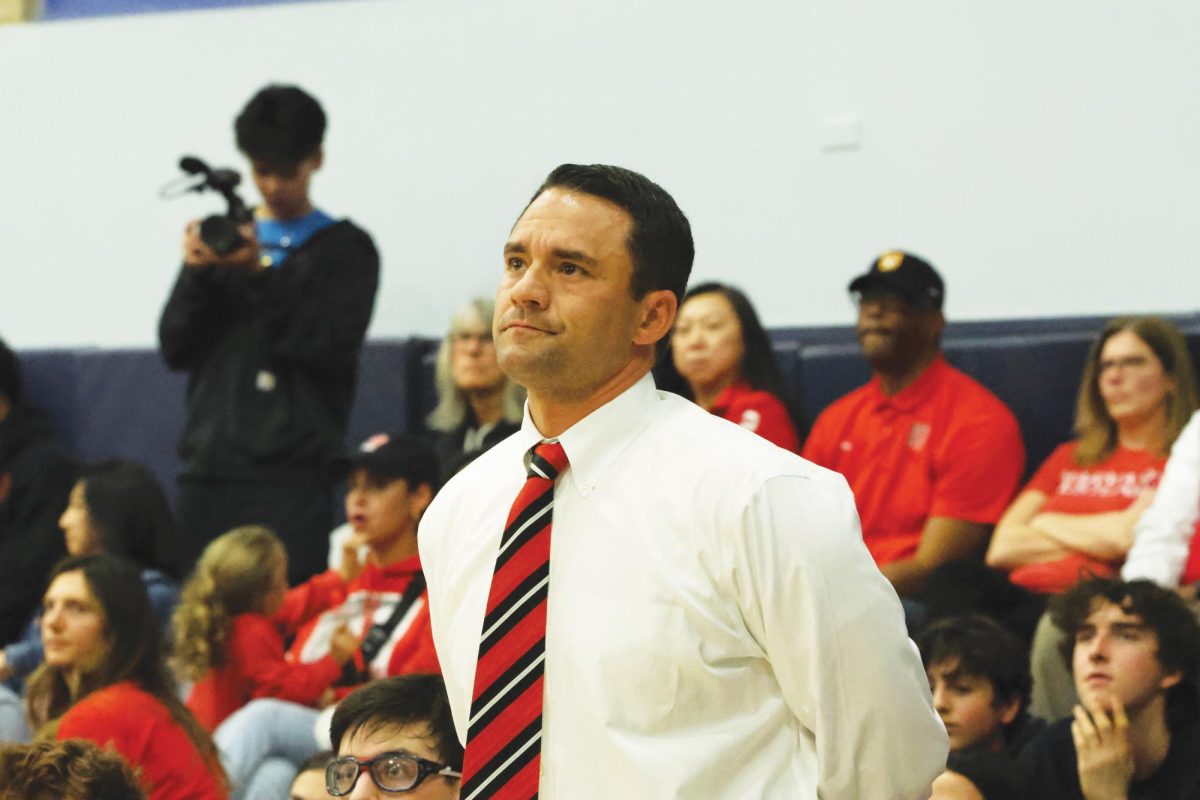Families with recent ties to other countries and cultures celebrate Thanksgiving, the traditional American holiday, by combining the spirit of gratitude and goodwill with their own celebratory foods and traditions.
Norway
There is no sweet potato pie in Norway, and, in 2005, there were only two flavors of ice cream: vanilla and Neapolitan.
Considering the lack of ingredients, creating an American Thanksgiving in Norway was a difficult task.
“There’s no cornbread,” Helene Miles ’16 said. “That was hard.”
Miles spent her seventh Thanksgiving in Kongsberg, Norway, her mom’s hometown, trying in vain to help her father make macaroni and cheese out of norvegia, the only cheese in Norway besides goat cheese. She succeeded, but just barely, and she served it to her mother’s side of the family along with broccoli, mashed potatoes, salmon (a staple of Norwegian cuisine) and turkey.
The mac and cheese and the vanilla ice cream they ate instead of their usual sweet potato pie wasn’t the only compromise the Miles family had to make that Thanksgiving.
Kalkun, Norwegian turkey, is more dry and plain than American turkey and is usually only eaten during Christmas, a feast that Miles said always involves turkey.
“We tried, [but] the food was super different,” Miles said. “As American as we tried to make [our Thanksgiving], it never really became American. It was a very Norwegian Thanksgiving.”
The strangest part, however, wasn’t the food but the fact that they were the only ones celebrating.
“It was weird,” Miles said. “No one else in Norway was celebrating. It was just a regular Thursday.”
However, Miles did her best to attach significance to what was, in Norway, just another day, making a presentation with her brother at the school they were attending about the history of Thanksgiving.
In America, at the annual potluck her dad’s side of the family holds each year to celebrate Thanksgiving, Miles’ Uncle Eric usually brings the mac and cheese, putting it on the table next to Swedish Aunt Ann-Christine’s fløtegratinerte poteter, cheesy Swedish potatoes.
“We always make stuffing,” Miles said. “And my dad always makes collard greens.”
This year, the Miles family may even invite two Norwegian students to their house to celebrate and learn about the holiday through an exchange program at UCLA.
“We’re gonna show them what we do,” Miles said.
El Salvador
Every Thanksgiving, kindergarteners across America wrap their right hands around their crayons and their left hands over a piece of paper to participate in a treasured part of American elementary school culture—the drawing of hand turkeys.
“‘Why’re you coming home with a turkey?’” 4-year old Alberto Rivera’s ’14 parents asked him.
Having grown up in El Salvador, Adan Rivera and Maria Diaz had no idea what Thanksgiving was, but, admiring their son’s artwork, they decided to start celebrating that year.
“My first Thanksgiving was a little late,” said Rivera, who, even after his family started celebrating, thought of Thanksgiving as more of a turkey-centric family reunion than a national holiday.
On Thanksgiving Day, Rivera’s family all gathers at Tía Fini’s house to cook, eat and catch up.
Before 4 p.m., Rivera said, “that’s all preparation.”
At the Rivera family Thanksgiving, Salvadorian food is eaten, but they do attempt to add some American aspects to their celebration.
For example, the Salvadorian dish panes con pollo, split bread with chicken, mayonnaise, cucumbers and yerba buena, is turned into panes con pavo, the same thing but with turkey to replace the chicken.
In addition to the turkey, the Riveras eat macaroni salad, mashed potatoes and a variety of Salvadorian drinks that they make themselves: horchata, ensalada and tamarindo, along with apple juice.
While the food is all prepared in one day, the real preparations begin long before the fourth Thursday of November. Rivera’s mom buys a turkey and sends out invitations a whole month in advance, and the amount of preparation pays off.
People usually don’t start dispersing until around 11 p.m., and there are a lot of people.
“Our table’s not big,” Rivera said. “So we have to rotate. They eat their food. Then, they go to the living room and mingle.”
Mingling, in fact, is what takes up most of the evening.
“After [the food],” Rivera said, “it’s sort of just family time. We’re pretty much just talking. When we talk, it just carries on forever.”
They talk about everything, Rivera’s mother catching up with Tía Fini while Rivera and his seven cousins complain about the cumbia, a popular music genre in Latin America, playing in the house.
“All the cousins grew up [in America], so we like to listen to our music. I don’t like [cumbia] very much,” Rivera said. “But I’ll tolerate it.”
Although Rivera isn’t a fan of the music, he feels more connected to El Salvadorian culture than to American culture, but he said, “I think I’m connecting [to American culture] more through my education. In school, I get more connected. Immigrants come here, their children go to school and they come back with hand drawings of turkeys. I think the transition of immigrants in this country celebrating Thanksgiving is children bringing hand drawings of turkeys.”
Rivera would still like to learn more about American traditions.
“I would definitely like to experience an ordinary type of Thanksgiving and compare it to mine,” said Rivera. “I’d be interested to see what they do. Chances are we have similar ideas.”
Even if Rivera did try a more traditional Thanksgiving, he thinks he’d still prefer his own way of celebrating.
“I enjoy our type of Thanksgiving,” he said.
Even though Rivera’s entire family enjoys the holiday, most of his family members are ignorant of the story behind it.
“They just know they give thanks for…who knows what they think? For us,” Rivera said, “[Thanksgiving] just became another excuse for the family to get together.”
Rivera said he doesn’t know the traditional way to celebrate, but he said he thinks that “the general way things happen are the same. In the end, I think we can always find something in common.”
Nigeria
For most people, giving thanks during the holidays is a short sentence about what they’re grateful for, but in at least a few households in America, thanks is shown through song.
“Ezechukwu” is one of the traditional Nigerian praise songs that Zita Biosah ’14 and her family sing every year during Thanksgiving.
“We pray for being alive,” Biosah said. “We pray for being together. We pray for being a good family.”
In Biosah’s family, Thanksgiving is divided into two parts. In the morning, she goes to her Grandma Catherine’s house to have a more American celebration.
There, she eats corn, turkey, mashed potatoes and other “white folk foods,” Biosah said. “It’s the time where we become American, but come night, it’s Nigerian Thanksgiving.”
Biosah and almost 50 of her family members go to her Aunt Stella’s house to drink Malta Huey and eat beans, cow feet, spinach with peppered goat, egusi soup (a popular West African soup made from ground egusi seeds) and fufu, a starchy ball of dough that is a staple of Nigerian cuisine.
All of the food in both the American and the Nigerian meal is cooked by Biosah’s family.
Biosah herself usually watches TV, sometimes a Thanksgiving special, while everyone else is in the kitchen. The only thing they don’t cook is turkey.
“The Nigerian [meal] smells much better [than the American one],” Biosah said. “You can smell the spices.”
However, the most anticipated event of the night isn’t the meal but the dancing afterwards.
“Dancing is the main highlight,” Biosah said. “Dancing is what feeds our souls. We turn up the speakers, it’s a big party.”
Listening to a cornucopia of Nigerian artists that include P-Square and Wande Cole, Biosah and her family get down to songs like “Sweet Moda” and Fela Kuti’s hit “Zombie.”
“The party song is called ‘Premier Gaou,’” Biosah said, making note of the fact that everyone’s “good clothes” in the morning are scrapped come evening. “At night, when it’s Nigerian,” she said, “wear your good pants to dance in.”
Some songs like “Azonto” and Kukere” have their own dances attached to them. “Then you bring your hands and wash your face,” said Biosah, moving around to try to explain the dance.
“Adults do it. Kids do it. Everybody dances,” Biosah said.
This type of celebration, however, is typical of all the Biosah family celebrations. In fact, Thanksgiving is a far smaller deal than many of the other holidays they celebrate, like Christmas and New Year’s Eve, a party that often doesn’t end until past one in the morning.
Thanksgiving is the celebration that ends earliest for the Biosahs. Biosah doesn’t even know what day it’s on.
“Thanksgiving is just not as important to a Nigerian,” Biosah said. “I’m Nigerian to the bone. I feel disconnected to a lot of [American] things because I’m first generation.”
The only reason they have the more American celebration in the morning is because her grandmother usually doesn’t come to the evening meal.
Much of Biosah’s family doesn’t even have a real understanding of what the holiday is about.
“My parents would probably just be like ‘I don’t know—pilgrims?’ It kind of goes over their heads because it’s something they don’t care about as much,” Biosah said.
They observe the holiday not for cultural reasons but rather as another excuse to celebrate.
“I don’t feel like I have any obligation to retain my Americanness,” Biosah said. “I feel just so much more alive [during our Nigerian celebration]. We’re embracing a lot more of the day. We’re thanking through dance. We’re thanking through prayer. We’re thanking through singing.”
When she grows up and starts her own family, Biosah said “[I’ll] definitely focus a lot more on the [Nigerian] part because I’m so afraid of losing that.”
France
People in France love to eat.
“There’s always an excuse to eat yummy food,” Eugenie Lund-Simon ’14, who lived in Paris until she was eight, said. However, she said, “French people don’t have feasts,” so, when she moved to America in 2004, she immediately fell in love with Thanksgiving.
“I love Thanksgiving because I love food so much,” Lund-Simon said, although her first Thanksgiving meal was less than stellar.
“We were staying in a hotel,” Lund-Simon said. “[So] we got take-out turkey from some fast food thing.”
That first Thanksgiving was the last time the Lund-Simons ate turkey together.
“It was disgusting,” Lund-Simon said. “We don’t like turkey. It’s just dry.”
Instead, the Lund-Simon family creates their own French Thanksgiving meal.
“Thanksgiving is a whole cooking process,” Lund-Simon said. “We don’t buy anything.”
Beginning with a 7 a.m. trip to Beverly Glen Market Place to buy baguettes, Lund-Simon, her mother, her father and her older sister Eléonore ’12 spend the majority of Thanksgiving Day in their pajamas, preparing for Thanksgiving dinner.
“We all have stations for food,” Lund-Simon said. “My thing is making the pear and ginger tart.”
To keep everyone’s energy up during the long day of cooking, “[we play] some hard-ass French music,” said Lund-Simon. In particular, the Lund-Simons listen to Carla Bruni’s album “Quelqu’un M’a Dit” every year.
During cooking breaks, the Lund-Simons play games like Twister, and, from four to five p.m., they all take a nap before going to the gym for two hours.
“We’re gonna eat some nice food,” Lund-Simon said. “So we need to work out.”
The ingredients the Lund-Simons use are authentically French, and they have to go to a special dealer to get them. The company they buy the ingredients from is called Saveurs, and is used by most of Lund-Simon’s favorite French restaurants in Los Angeles, but they are not easy to find. She said her mom usually just finds them at stalls in markets.
When dinner is finally served, “[it’s] pretty much a bunch of French people [who] get together and don’t eat turkey,” Lund-Simon said.
The Lund-Simon Thanksgiving meal comes in three parts.
First, the appetizers: either nut soup, escargot or seafood served with champagne. Lund-Simon and her sister drink champoni, a non-alcoholic kids’ champagne that resembles sparkling apple cider.
For their main dish, the Lund-Simons eat chicken, veal or duck, all with fruit stuffed inside, accompanied by celery root puree and warm apples with caramel. For desert, they share Lund-Simon’s pear and ginger tart.
The eating continues into the next day when Lund-Simon shares leftovers with her French friends who want to experience Thanksgiving.
In addition to the food, Lund-Simon celebrates Thanksgiving because of the culture.
“[At first,] I didn’t consider myself an American,” Lund-Simon said. “[But] if I move back to France, I’ll continue celebrating Thanksgiving and watching the Super Bowl.”
China
Yellow paper burns in the Chinese countryside in August. Huang zhi, it’s called. It represents money being sacrificed to Lao Tian, a “Chinese god,” upper school Chinese teacher Yi Jiang said.
Jiang is from Shandong, a rural province in Northern China. In 2009, she moved to America with her husband Hai Long and 3-year-old son, Yi Nan.
Since then, she’s celebrated three Thanksgivings and will soon enjoy her fourth.
Coming from a culture where the closest thing to Thanksgiving is the annual harvest festival in August, Jiang didn’t know much about the holiday, although she had learned a little from American books, movies and her world history class.
“Eat turkey,” Jiang said. “That’s what my first impression [of Thanksgiving] was. And thank the Indian people.”
Although, she’s been in America for four years, Jiang is still learning about Thanksgiving.
“I get a lot of cultural content from my elder son,” Jiang said. “But [I] also learn from friends and neighbors.”
Jiang’s neighbors are mostly American. It was at one of her neighbors’ houses where Jiang first celebrated Thanksgiving.
“I didn’t know how to roast a turkey,” Jiang said. “It was my American friends who invited us to eat turkey with them. It was a very nice opportunity for us to have fun with our friends. The kids were very happy, and the adults were very happy to eat turkey.”
Jiang has since adopted many Thanksgiving traditions, but she still incorporates Chinese customs into her celebration.
Jiang’s friends taught her how to roast turkey, but, more accustomed to roasting Peking duck, Jiang said she combines American techniques for roasting turkey and Chinese techniques for roasting duck.
One year, she even hosted the celebration, but she and her family usually eat at their friends’ houses, barbecuing when the weather’s warm.
At her house, Jiang said they cook Chinese food like fish, chicken, pork and duck, the same foods that are sacrificed to give thanks to Chinese god Lao Tian.
Unlike American Thanksgiving, where the symbolism is in the idea of a community feast, in China, the food itself has significance. The chicken, pork, fish, corn and wheat are communally blessed and sacrificed to Lao Tian. Sometimes, there are firecrackers too.
“We eat because it brings people good luck,” Jiang said,.
But Jiang’s favorite part of Thanksgiving is the family, an aspect not in the harvest festival.
“Family is very important,” Jiang said. “But, unfortunately, we have to study hard and work hard, so there’s not a lot of time for family.”
The main difference Jiang said is that “in China, to celebrate the harvest is to give thanks to the god, but, in America, it’s more about thanking the Indians.”
Despite their differences, Jiang has no preference.
“They are both very good,” she said. “I like family reunions. I like people to be grateful. I think people should have these kinds of appreciations. Giving thanks. I think that’s the most important thing.”





































